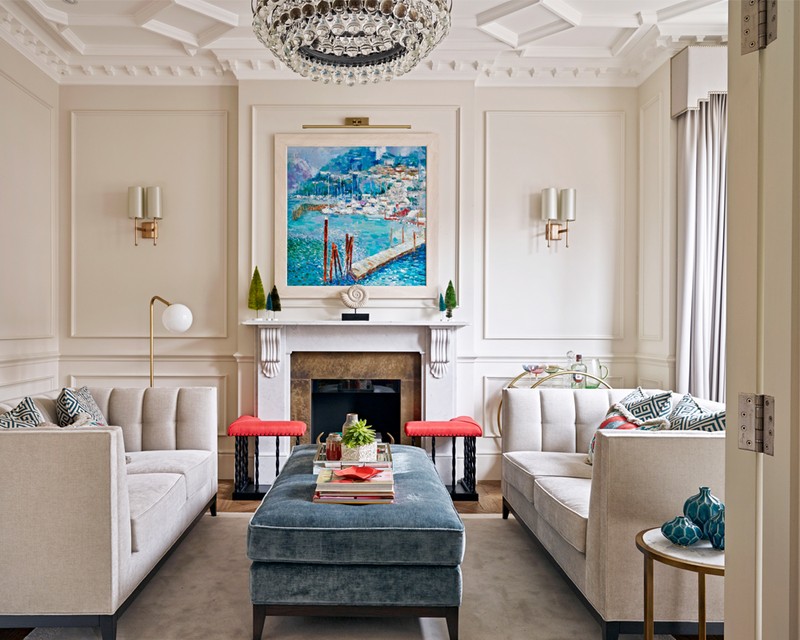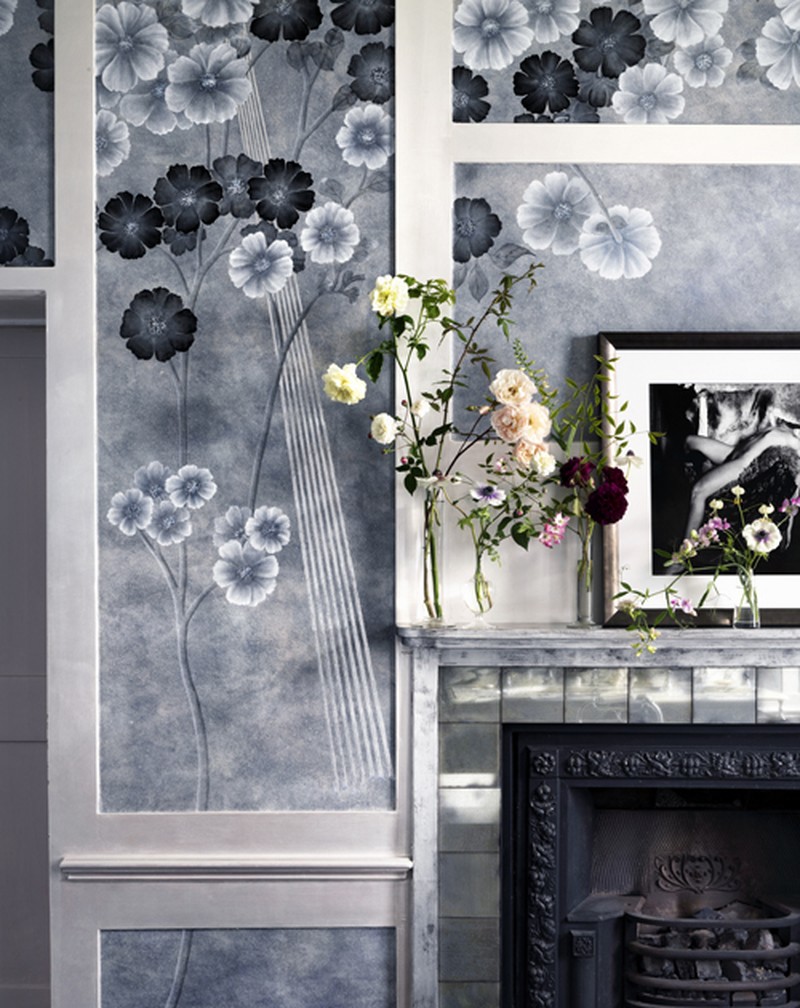Why Panelling Is On Our Radar

Panelling is having a resurgence. Scroll through Instagram and you will be inundated with moody walls in cinema rooms, elegant hallways, half-covered cloakrooms and stylish bedrooms – which shows how versatile this trend is. As Caroline Doyle, co-founder of interior designer Fig London, explains, “Panelled walls bring a variety of atmospheres to a home. They will immediately add texture, detail and personality to a room. Taking over from the now-passé painted or wallpapered feature wall, panelling is a versatile and cost-effective way to update a room. Whether it be a traditional or modern room, there is a panelling style to suit almost every home.”
What should you consider when assessing your space? “First, I would consider the style of panelling based on the age of the property and the existing features of the room,” advises Sam O’Grady, interior designer and founder of Oliver Bea Design. “The panelling needs to suit the style and proportions of the room itself. Also, think about what sort of feel you wish to create in the room.” To keep it fresh and modern, opt for painted panelling, clean lines, minimal beading (also known as decorative moulding) and light colours.
Panelling can make a large room feel cosy and warm, it can make a small room feel wider, and it can provide a practical surface in high-traffic areas such as a family hallway. Some designers have used it in place of a headboard behind a bed, taking up the whole of the back wall, which is really effective, and others have enhanced plain doors, including wardrobes, to add gravitas to a room. Interiors stylist Alisa Bovino has used panelling in various rooms in her home. “Panelling has been one of the most impactful changes we have made to our home,” she says. “The style of our home is considered to be boxy and lacking character, but the addition of panelling to one room at a time has completely transformed each space. It creates depth, adds height and gives a previously bland room a ‘wow’ factor.”
Part of panelling’s rise in popularity is its changing price point. Jon Madeley of The English Panelling Company explains that manufacturing methods have changed. “Panelling used to be a specialist product made by a skilled joiner from solid pieces of wood. We have created a product that is made from MDF, it’s open-back to be stuck onto the wall itself, and can even be fitted by the customer.” Check out Jon’s tips below.
Alisa installed much of her panelling herself, as did Leoma Harper from Style The Clutter. “Panelling is such a quick and effective way to inject personality and character into a room. There’s a lot of measuring involved to make sure all squares are symmetrical and level. But once that is out of the way, it’s a lot of fun cutting the solid pine beading to size, then sticking it to your template on the wall. Once it’s covered with a lick of paint, it will look like it has always been there.”



If your walls are flat and angular, you have an advantage. Fitting panelling yourself in a modern home or new extension is quite possible. “The job becomes more complicated when you are trying to match new panelling to existing elements in the room. You may need a professional to help with this,” advises Sam. “In a recent hallway project, we took a long time trying to match the proportions to existing panelling on the front door and the ground-floor side of the staircase, but it was worth it.”
For one of the most glamorous ideas involving panelling, consider wallpapering the spaces within the panel frames in your bathroom, à la Kate Moss’s collaboration with De Gournay. Using a handpainted wallpaper in monochromatic tones creates an art-deco feel within the panels. “It adds warmth, texture, dimension and drama to a room. The wallpaper can transport you to another place; it lifts the soul,” said Kate at the time.
If you’re feeling nervous about marrying paint and paper, you could try a manufacturer that matches them for you. Paula Taylor, Colour & Trends Specialist at Graham & Brown, suggests using deeper tones as your anchor. “Layering a palette of earthy neutral colours is a way to add a sense of dimension. Ensure you steer clear of colour clashes by using the darker tones within the panel to avoid harsh divisive lines between the sections. For an inviting contemporary environment, pale praline shades will reflect light in a bedroom or living space yet add warmth for the winter months.”
Get The Look
If you’re feeling ready to do it yourself, Jon Madeley of The English Panelling Company has some tips for installing open-backed panelling directly onto your walls.
What is open-backed panelling?
Open-backed types have perforations in the shape of rectangles or squares to create the panelled look.
How do I choose the right panelling for the job?
This will depend on the following three factors:
- The condition of the walls. If the walls are smooth, flat and dry, you can use any type of panelling direct to the surface.
- The need to conceal services. If there are pipes or wiring to be concealed, use any of the open-backed designs on plasterboard fitted to the studwork.
- The proportions of the room/area and style considerations. Generally speaking, the finished room will look best if the top of the panelling run is either one-third or two-thirds of the height of the room, rather than dividing it in half. Other factors to consider include the height of fire surrounds, fitted cupboards and window sills, or the presence of existing dado rails. Style considerations would take into account the age of the property and its existing features (simple or ornate).
Can I retain my existing skirting boards?
Most types of skirtings, particularly in older properties, have a bit of a horizontal ledge at the top for the 9mm thick panels to sit on. If you have Bullnose-type skirtings with a rounded top, this won’t work, so you might consider replacing the skirting.
Can I use panels in kitchens and bathrooms?
We use only the best-quality moisture-resistant MDF made in the British Isles. It is suitable for the humidity to be found in these rooms as long as the panelling is painted using a good-quality eggshell paint (or paints specifically intended for kitchens and bathrooms).
How do I set the panels out?
Symmetry is key. Establish the centre of each run and work outwards from there towards the ends or, alternatively, from the ends back towards the centre.
How do I stick them to the wall?
We suggest PVA glue. Use a mini roller and ensure it is fully coated. Press the panel to the wall; secure it (either temporarily or permanently) with pins in the corners to hold it while the adhesive sets.
What paint can I use?
Apply a good-quality universal primer and this will show up any areas that may still need attention. When complete, apply two coats of water-based eggshell. We think Little Greene is the best one on the market.
How much will it cost?
Prices range from £16 to £30 per square metre. The price comes down the more you order, so a typical wall is usually about £200.
Find out more at TheEnglishPanellingCompany.co.uk
DISCLAIMER: We endeavour to always credit the correct original source of every image we use. If you think a credit may be incorrect, please contact us at info@sheerluxe.com.



